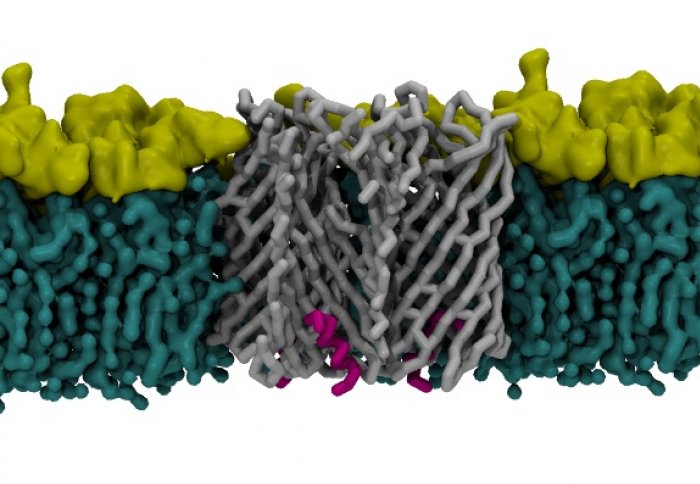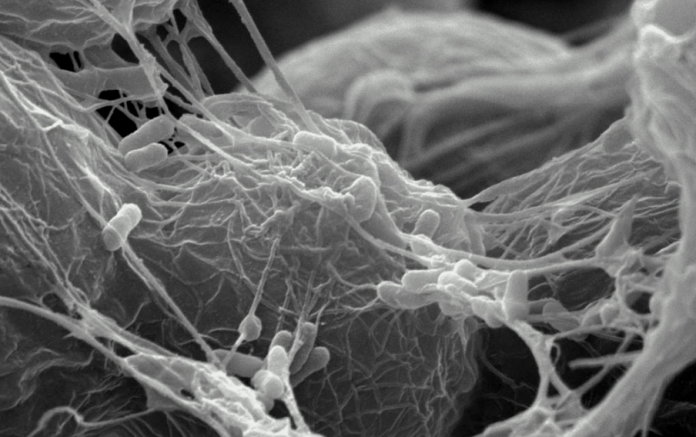Biofilms are usually formed when bacteria are stressed, such as when they are attacked by antibiotics or the immune system. They join together to form biofilm and it’s the way that it does this in order to evade an attack, that has fascinated scientists and spurred them on to do something with this knowledge. These latest results could pave the way to finding new ways to get around antibiotic resistance as well as helping to create new, nanomaterials that have been biologically inspired.
These bacteria biofilms are built up of tough protein fibers called amyloids. Too many amyloids in humans can cause health conditions, including Alzheimer’s disease. On the flip side, bacteria can control amyloid protein and fiber growth so research into these processes is a great way to try and find new ways of preventing amyloid disease in humans.
New machinery has been mapped by a team of researchers led by Imperial College of London that sees one group of bacteria used to secrete amyloids. “Biofilms make bacteria more resistant to antibiotic attack and discovering more about their assembly will open new avenues for tackling antibiotic resistance,” says lead researcher from the Department of Life Sciences at Imperial, Professor Steve Matthews. “Drugs aimed at interrupting the bacteria’s ability to secrete amyloids would render bacteria more susceptible to the antibiotic treatment,” he confirmed.
Bacteria is transported through pores in the cell once the amyloids have been created. It is through a ‘gate’ that the amyloids are allowed out and it’s this part of the process the team intend on studying further. As well as being used in medical applications and manufacturing, amyloid formation is being used in applications in biosensing and nanomaterial fabrication. “Amyloids are some of the strongest fibers in nature, for example, spider silk contains amyloid-like structures,” confirms co-author of the study Dr. William Hawthorne, from the Department of Life Sciences at Imperial. Being able to understand how bacteria makes these fibers allows the researchers to get one step closer to creating “new, strong nanomaterials with tailored properties”, says Hawthorne.
Research was done by Imperial College, research file @Nature communication

More News to Read
- Can Twitter Step it Up and Provide Real Time Monitoring During Disaster Situations?
- How to Make a Supercomputer?
- Scientists Use New Model to Better Predict Brown Dwarf Weather Forecasts
- Researchers Discover Neurons are Much More Flexible Than We Thought
- Tedious Film Editing Could Soon Become a Thing of the Past

